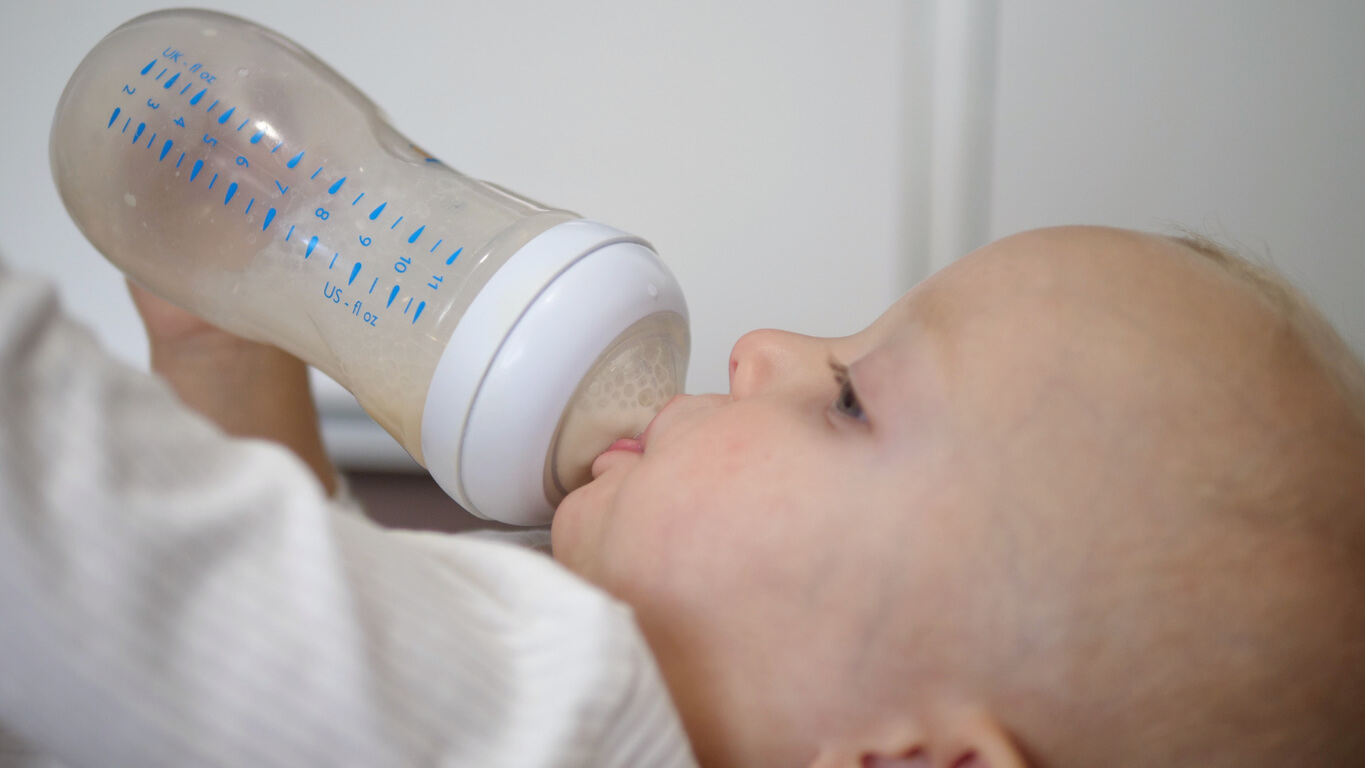Diet for Intestinal Malabsorption in Babies
Intestinal malabsorption in babies is a condition that occurs when there's an inability to absorb nutrients. Learn more about it.

There are several causes of intestinal malabsorption in babies and children in general. One of its main symptoms is chronic diarrhea and, in more severe cases, it can reach different degrees of malnutrition. As the disorder is related to the process of digestion and absorption, nutrition is key to the support and treatment of the disease. Keep reading to find out what the most appropriate diet for babies with this disorder is.
Read also: What is Malabsorption Syndrome in Children?
What is intestinal malabsorption in babies and how to distinguish it?
Intestinal malabsorption is the inability of the digestive system to absorb various nutrients such as sugars, fats, proteins, or vitamins from food. During this disorder, there’s an absence of enzymes that help transform nutrients for absorption or problems in the transport system, especially in the small intestine.
There are several diseases that can cause it. We can find lactose malabsorption, allergy to cow’s milk protein, or malabsorption of fat, vitamin B12, iron, calcium, and gluten intolerance, among others.
Symptoms
Symptoms of intestinal malabsorption in babies include the following:
- Diarrhea. Stools are loose, constant, and have a strong odor. Unabsorbed nutrients increase the osmotic load within the intestine and attract water and electrolytes to dilute them. Also, abdominal distension and flatulence are typical.
- Infections, weakened skin, and fractures. This occurs especially if the diarrhea is of long duration. In these cases, the body’s defenses are compromised.
- Irritability, weakening, drowsiness, and apathy.
- Weight loss, anemia, and osteoporosis, among other symptoms of malnutrition. It all depends on the type of nutrient that’s not being absorbed.

Nutritional treatment
Regardless of the cause, nutritional treatment is essential from the beginning of the clinical picture to avoid malnutrition. While the pediatrician finds out the origin of the malabsorption, the patient must be evaluated and a nutritional action plan must be managed. The main objectives are to reduce diarrhea, help control nutrient deficits, and improve nutritional status. Nutritional assessment includes measuring weight, height, and body mass index, and assessing the panniculus adiposus and muscle mass.
Doctors will also observe the coloration of the skin and mucous membranes and if the hair is thin and brittle. With this and other tests, malnutrition due to nutrient deficiency is considered.
Discover the diet for intestinal malabsorption in babies
It’s very important to avoid low-calorie or unbalanced diets, as they can favor a vicious circle between diarrhea and malnutrition. This is stated in the journal Pediatria Integral. Therefore, the following recommendations should be followed.
Under 6 months of age
Breastfeeding shouldn’t be withdrawn in children under 6 months of age. In cases of mixed breastfeeding, the formula should be substituted progressively until exclusive breastfeeding is achieved.
After 6 months
After 6 months, infants shouldn’t be introduced to new foods and the diet should be exclusionary. For example, one can switch from lactose-free formula to protein hydrolysates and then to amino acid-based formulas. For infants receiving formulas, they should be adapted to the diagnosis. For example, in the case of an allergy to cow’s milk protein, hydrolyzed formulas, in which the nutrients are pre-digested to facilitate absorption, will be indicated.
In case of good tolerance to complementary foods, they can be maintained in the diet. For this purpose, the most astringent foods, such as rice, are selected. On the other hand, the most suitable fruits are applesauce or sweet potato puree, while packaged fruit juices with a high sugar content should be restricted. In addition, a study determined the efficacy of the use of probiotics in the treatment of lactose malabsorption.
Read also: The Symptoms of Food Allergies in Children

More severe cases of intestinal malabsorption in babies
In case of severe diarrhea and nutritional impairment, the infant may require enteral nutrition. This is carried out through a small tube that goes directly into the stomach or a portion of the small intestine. In that way, nutrients will be delivered uninterrupted through a mechanical process. Other cases require delivering nutrients directly to the intestine and special formulas that connect directly to the vein are used.
Other important recommendations
Other important recommendations in case of intestinal malabsorption are as follows:
- For preschool and school-age children, less copious and more frequent intakes are suggested.
- Avoid foods and condiments that irritate the intestinal mucosa. For example, spicy food, coffee, chocolate, snacks with excessive coloring, and those that produce flatulence such as cabbage and legumes.
- Prepare boiled or steamed foods. Other cooking techniques can be added later.
- Avoid sugary products, such as sodas, industrialized juices, sweets, and candies, among others.
- Follow a progressive diet. It should be expanded little by little until a varied diet is achieved. You should wait 2 or 3 days to try a new food. Depending on tolerance and how the intestine adapts, other foods can be introduced.
The treatment should be guided by the pediatrician
We’ve mentioned a series of general recommendations that you can apply according to the individuality of each case. However, you shouldn’t forget that the treatment of intestinal malabsorption should be prescribed by a pediatrician, while the nutritional part should be managed by a nutritionist.

